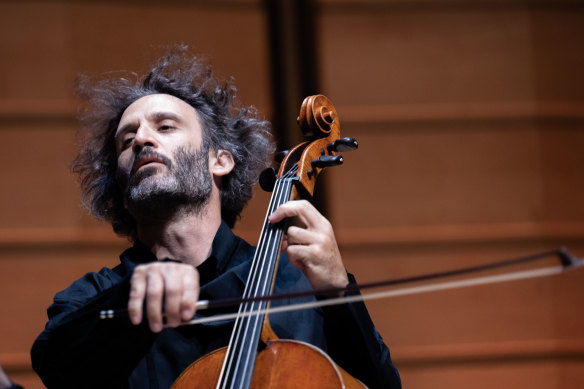
Altstaedt plays Haydn & Tchaikovsky
Australian Chamber Orchestra
City Recital Hall, June 18
Reviewed by PETER McCALLUM
★★★★½
Cellist Nicolas Altstaedt tossed out the themes from the first movement of Haydn’s Cello Concerto in C major with light buoyancy, exchanging graciously turned sequences with ACO leader Helena Rathbone with sublime elegance.
In the slow movement he moved through the serene Adagio to a place of scarcely breathing quietness disturbed only by ethereal wisps of hushed stillness. The finale entered a state of exhilarating dynamism in which Rathbone and the orchestra provided a light backbone of support to Alstaedt’s nimble hyperactivity, picking up the energy at the end of phrases like a ball caught in flight.

Visiting cellist Nicolas Altstaedt.Credit: Nic Walker
This was a program which aspired towards the classic, and Haydn’s concerto, coming at the end, embodied the Arcadian spirit it had been reaching towards. The concert had also started with Haydn, but in more agonised mood, with the introductory movement to his cycle The Seven Last Words of Christ.
The ACO played with bold arresting expressive strokes while Altstaedt directed from the cello section. This gave way, without a break to the searing dissonant clusters of the first of three selections from Gyorgy Kurtag’s Officium breve, in memoriam Andreae Szervanszky.
Loading
Kurtag’s musical thought is served in compressed fragments of transient vividness that stop after a single utterance, resisting any temptation to extrapolate or explain. The third Kurtag excerpt (one was left wanting to hear the whole work) led straight back to Haydn at his most convulsive – the last movement of The Seven Last Words, Il Terremoto – the earthquake.
The next piece, Tchaikovsky’s Variations on a Rococo Theme, Opus 33 for cello and orchestra (arranged for chamber orchestra by Bernard Rofe) looked towards the classic in a nostalgic backwards glance. Altstaedt played the Rococo Theme with reverence, avoiding coy exaggeration, focusing on creating a closely knitted musical conversation with the orchestra, and playing passages of the most fiendish difficulty with eyes searching the horizon like one possessed. The ACO’s engaging, rhythmically intricate performance of Four Transylvanian Dances by Sandor Veress took the concert up to interval.
To start the second half, Altstaedt conducted Aroura by one of the giants of the post-war 20th century avant-garde composer Iannis Xenakis. Celebrating the city of Athens, the work embodies architectural thought in its very grain, and Altstaedt’s conducting seemed to accumulate sprung energy from wiry gestures, only to release it explosively, as though hewing off great blocks of textured sound.
The ACO’s performance was taut and monumental and gave way, without a break, to the radiant C major chord as though we had finally arrived at Elysium. Altstaedt prolonged the classic moment with the cello solo from the slow movement of a Haydn’s Symphony No. 13 in D as encore.
The Booklist is a weekly newsletter for book lovers from books editor Jason Steger. Get it delivered every Friday.



























